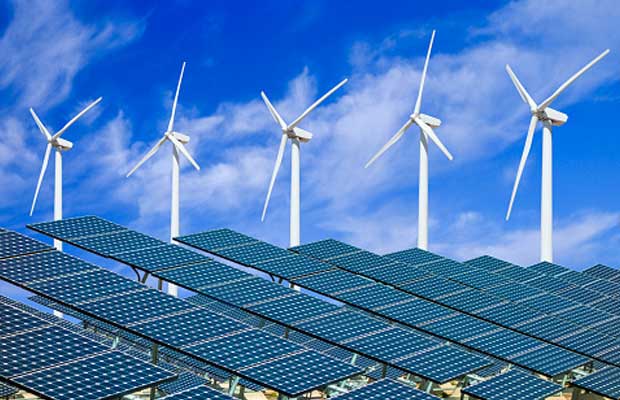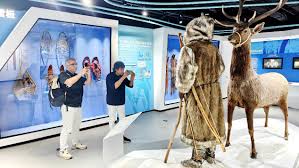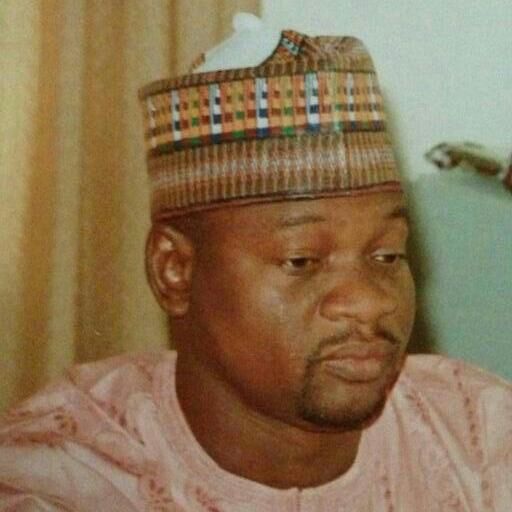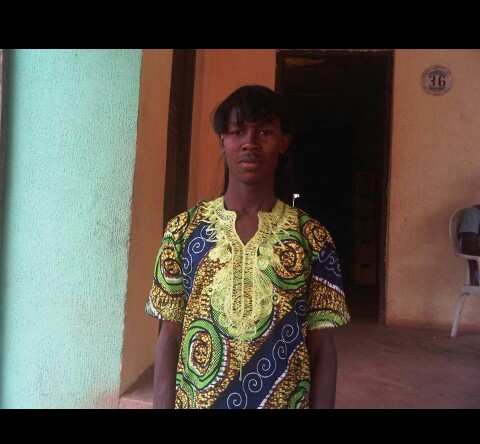Foreign
Yancheng making “green generators” with “green electricity”

By Yao Xueqing, People’s Daily
As the sea breeze rushes toward a wind farm on the shores of the Yellow Sea, at a speed of 7.6 meters per second, the blades of towering wind turbines start spinning.
These turbines convert mechanical energy into electrical energy, and in an instant, the “green electricity” is transmitted through undersea cables to the land, where it is fed into the power grid.
Over 70 kilometers away from the wind farm, machines in a turbine general assembly factory are running tirelessly, powered by the “green electricity” from the sea. Nacelles and hubs are assembled here and then transported offshore to join with blades and towers to form gigantic “windmills.”
Yancheng, located on the coast of east China’s Jiangsu province, boasts the country’s largest offshore wind power industrial cluster and a huge capacity of offshore wind power. It has developed a comprehensive offshore wind power industrial chain that integrates research and design, equipment manufacturing, resource development, and operational services. It is using “green electricity” to produce “green generators.”
In a lab in the general assembly factory of Goldwind Science and Technology Co., Ltd. in Dafeng Economic Development Zone, Yancheng, a prototype of a 10 MW wind turbine was being tested, with real-time data flashing on a large screen.
“Research and design, as well as prototype testing, are the starting point for wind turbine manufacturing,” said Lu Jinhong, deputy director of the lab.
According to him, the company would first collaborate with suppliers to produce a prototype based on blueprints, and then send it to the laboratory and a test field for hundreds of integrated tests. After third-party certification, the prototype then enters mass production. The entire process takes about a year.
The general assembly factory of Goldwind Science and Technology Co., Ltd. primarily assembles the structural components of nacelles and hubs. As a facility that started with producing 2 MW offshore wind turbines, it is now able to manufacture turbines up to 11 MW, with an annual production capacity exceeding 1,200 units, 30 percent of which are exported.
Deputy general manager Ning Haifeng attributes the company’s growth to the efforts made by the local industry to strengthen and extend the industrial chain.
A wind turbine comprises a nacelle, a hub, blades, and a tower. It has thousands of components manufactured by over 300 first-tier suppliers.
Most of the large components can be sourced in Dafeng Economic Development Zone, while key parts are available from suppliers in Yancheng. About 95 percent of all components can be found in Jiangsu province, where a supply chain that enables delivery within three hours is developed.
In recent years, Yancheng has gathered 41 enterprises above the designated size, building the largest offshore wind power industrial cluster in the country, with the total production capacity accounting for approximately 40 percent of the national output.
Yancheng boasts a coastline of 582 kilometers, with an average annual wind speed of 7.6 meters per second at a height of 100 meters above the sea level, and annual full-load hours exceeding 3,000.
Since 2016, Yancheng has established 23 offshore wind farms, with a total installed capacity of over 5.54 million kW, accounting for 46.9 percent of Jiangsu province’s total and 14.9 percent of the national total.
In the city’s Binhai county, 75 virtual wind turbines were displayed on a large screen at the central control center of a smart wind farm. Real-time parameters, such as wind speed and rotation speed, would be revealed with just a click on any of these virtual turbines.
“To make the turbines turn, we first need to know where the wind is coming from,” said Yang Rong, deputy general manager of the Jiangsu Offshore Wind Power Company, State Power Investment Corporation.
Each turbine’s nacelle is equipped with a yaw system that can accurately predict wind direction and speed each hour, helping adjust the turbine’s orientation – similar to how sunflowers always face the sun – to maximize their exposure to the wind.
Yang told People’s Daily that the blades can rotate at a maximum speed of 12 revolutions per minute. It is seemingly slow, but given their length of about 100 meters, the tips can reach speeds of up to 300 kilometers per hour. The blades drive the gearbox to rotate at 1,600 revolutions per minute, enabling the conversion of wind energy into electrical energy through electromagnetic induction in the machine.
In 2023, Yancheng’s offshore wind farms generated 14.807 billion kWh of “green electricity,” all of which was integrated into the power grid. Of this, 12.16 billion kWh was consumed locally, while the remainder was transmitted to other regions.
The three offshore wind farms in Binhai county have a total installed capacity of more than 1.1 million kW, generating 3.079 billion kWh of electricity annually, which accounts for 95.6 percent of the county’s total electricity consumption. In Dafeng, this figure stands at 70.24 percent. It means that most of the electricity used in the production of wind turbines by companies like Goldwind comes from the turbines themselves.
Today, it’s becoming a reality that wind turbines are generating electricity, and that same electricity is being used to produce more turbines.
Foreign
Discovering culture and friendship in China’s ‘Snow Capital’ Altay

By Huan Xiang, Han Liqun, Hu Renba
Altay Prefecture, located in the northwest frontier of China, sits in the northeast part of Ili Kazak autonomous prefecture in the north of Xinjiang Uygur autonomous region. It borders Mongolia to the east, Kazakhstan to the west, and Russia to the north.
From the pristine Kanas Lake, hailed as “a pure land on earth,” to the majestic landscapes of Koktokay and to the millennia-old rock paintings that earned Altay its global reputation as the “cradle of skiing,” this land is distinguished by its breathtaking natural beauty and profound cultural heritage.
“Come here, try our kebabs!” called out a man in slightly accented Mandarin. He is Percev Timofei Nikolayevich, affectionately known as Jima, a Kazakh national who now co-owns a barbecue restaurant in Beitun, Altay Prefecture, with his Chinese wife, Guan Xinlan.
Their story began at the Jeminay Port, a long-standing border crossing at the convergence of China, Kazakhstan, Russia, and Mongolia. With over a century of trading history, the port has long served as one of the most accessible gateways for China’s commerce with the three neighboring countries.
Since reopening more than 30 years ago, it has quickly regained its role as a regional trade hub. Spotting the opportunity, Guan opened a small eatery near the port in 2005 and learned Russian to serve foreign customers.
Jima, a long-haul truck driver on the China-Kazakhstan route, soon became her de facto language tutor. Known for his warmth and generosity, he helped Guan learn Russian while also supplying her with specialty ingredients from Kazakhstan. Their relationship blossomed, and the couple married in 2009. Jima chose to settle in Altay, where he now helps run their growing business.
In recent years, improved customs efficiency and a mutual visa exemption agreement between China and Kazakhstan have significantly facilitated cross-border movement. For Jima’s family, the prosperity of the port has laid the foundation for a fulfilling life. The booming popularity of Altay as a cultural and tourism destination has opened new opportunities. In April this year, they relocated their restaurant to Beitun, expanding their reach with signature Russian-style kebabs.
From truck driver to entrepreneur, Jima has made Altay his second home. “Altay is beautiful and well-connected, attracting visitors from neighboring countries and beyond,” he said.
Altay’s mountainous terrain is covered in snow for nearly a quarter of the year. In 2018, China’s National Climate Center recognized Altay as the “Snow Capital of China.” The region’s core ice-and-snow area spans more than 30,000 square kilometers, comparable to the Alps in Europe or the Rockies in North America, making it one of the world’s premier destinations for ski tourism.
In 2005, a herder discovered ancient cave paintings in an Altay valley depicting humans skiing on primitive boards with a single pole in hand to hunt. Confirmed by researchers, these drawings represent the earliest known evidence of human skiing activities, dating back between 10,000 and 20,000 years ago.
At an international seminar on ancient skiing culture held in Altay in January 2015, more than 30 experts from 18 countries, including Norway, Sweden, and Finland, reached a consensus recognizing Altay as the birthplace of human skiing.
Nestled in the Altay Mountains, Altay is often described as “a city built within a ski resort.” Its Jiangjunshan International Ski Resort, just 1.6 kilometers from the city’s central square, holds a national 5S alpine skiing destination. With annual snowfall depth exceeding two meters, its light, fluffy powder snow has earned it the nickname “Asia’s powder snow paradise.”
The resort also reflects the growing internationalization of China’s winter sports. “We’ve seen an increase in foreign visitors in recent years, from tropical countries like Malaysia to traditional winter sports nations such as Russia, South Korea, and Japan,” said Li Xia, head of the Jiangjunshan Mountain Ski Academy.
Altay has rapidly expanded its ski infrastructure in recent years. Apart from major resorts such as the Jiangjunshan and Koktokay international ski resorts, recreational ski facilities have been established in every county. During the most recent snow season, Altay welcomed 1.408 million ski tourists, a 23.37 percent year-on-year increase.
In Altay, traces of early human skiing meet the vibrancy of a modern, international winter sports hub. With snow as a bridge and culture as its core, this borderland continues to foster stories of friendship and connection.
Foreign
Shared development: a strategic response to global challenges
By He Yin, People’s Daily
On September 23 local time, China hosted the High-Level Meeting on Global Development Initiative (GDI) at the United Nations (UN) headquarters in New York, announcing new steps to advance the initiative with the international community. A statement was issued at the meeting, reaffirming the consensus to prioritize development and deepen cooperation under the initiative.
At a time when global development faces challenges, China is committed to building consensus and mobilizing international cooperation to drive the GDI forward, injecting strong impetus into addressing development difficulties worldwide and accelerating the implementation of the 2030 Agenda for Sustainable Development.
Development remains an eternal theme of human society and the key to people’s well-being. The UN Charter enshrined development as one of the organization’s founding purposes.
In September 2021, Chinese President Xi Jinping proposed the Global Development Initiative at the general debate of the 76th session of the UN General Assembly. With the broadest interests of humanity in mind, he called on all parties to stay committed to development as a priority, to a people-centered approach, to benefits for all, to innovation-driven development, to harmony between man and nature, and to results-oriented actions.
Since its launch, the GDI has provided a practical framework for renewing global cooperation on common development. Against the backdrop of rising unilateralism and protectionism, which have severely undermined international development cooperation, the world economy has lost momentum, and the development divide between the North and the South has continued to widen.
In this increasingly challenging environment, the GDI has gained relevance and traction as a guiding framework for reinvigorating international development cooperation. To date, over 130 countries and international organizations have taken part in the implementation of the GDI. The UN has established a GDI implementation work group, and the China-Africa-UNIDO Center of Excellence has been inaugurated.
As China’s proposals turn into international consensus and the country’s visions for inclusive development translate into concrete actions, the GDI is increasingly recognized as a global public good aligned with the needs of the times.
UN Secretary-General Antonio Guterres affirmed that the GDI is totally compatible with the Sustainable Development Goals (SDGs) and directly addresses the development challenges confronting the international community.
China has always championed win-win cooperation and common development, advocating joint efforts to make the development pie bigger. The GDI embodies this approach through concrete action.
At a time when some developed countries have fallen short on development-finance commitments or reduced support for international institutions, the initiative has mobilized tangible resources and partnerships to support common progress.
In the past four years, the initiative has mobilized more than $23 billion to support the development and revitalization of the Global South, and launched over 1,800 cooperation projects. From technological cooperation to capacity building, from poverty reduction and education to the digital economy, from high-yield rice to fungus-based processing, and from child nutrition and health to women’s economic empowerment, GDI cooperation has delivered tangible benefits and strengthened local development capabilities.
These efforts have demonstrated that China’s philosophies and agenda of common development not only help countries address pressing challenges, but also provide strong momentum for advancing the broader cause of global development.
Facing new circumstances and challenges, China remains firmly committed to advancing common development. It recently announced that it would forgo any request for new special and differential treatment in current and future World Trade Organization negotiations. This decision demonstrates China’s firm commitment to safeguarding the multilateral trading system and carries clear development significance. It will help refocus the multilateral trading system on development priorities and enhance the inclusiveness and universality of international trade.
China also announced a package of concrete measures: over the next five years, it will implement another 2,000 “small and beautiful” livelihood projects in developing countries; establish a funding program dedicated to digital capacity-building within the Global Development Capital Pool; put forward a new AI+ International Cooperation Initiative; carry out 200 maritime development cooperation projects; and implement a Clean Stove Project in developing countries.
These initiatives will accelerate the implementation of the UN 2030 Agenda for Sustainable Development, and enable more developing countries to seize the opportunities of technological transformation and green transition.
On the path of development, no country or individual should be left behind. This simple yet profound vision animates the GDI and is integral to building a community with a shared future for humanity. China stands ready to work with all parties to use the GDI as a platform to upgrade cooperation, prioritize practical actions, and achieve shared benefits, so that the fruits of development will better benefit people around the world.
Foreign
Farming made easy: how an APP is revolutionizing rural harvests in E China’s Jiangxi

Yang Yanfei, People’s Daily
At 8 p.m. in Longyun village, Yantian township, Anfu county, Ji’an, east China’s Jiangxi province, Li Minggui reclined in his rocking chair after a long day, chatting with his wife about the rice harvest.
Li is the head of the Yantian comprehensive agricultural service center. While most parts of Jiangxi are racing to complete the double-cropping rice season, hilly villages like Longyun began harvesting their single-cropping rice in early September.
As the couple spoke, Li’s phone rang. “Hello, this is from Walou village in Xukeng township. I got your number through the Ganjitong farm machinery dispatch system. Do you have time tomorrow? The weather looks good for drying grain,” said a farmer on the line.
“No problem, but the dew is heavy in the morning, so you have to wait until 9 a.m. I’ll send our veteran, Min Lixiang, to lead the team,” Li replied.
At 3 p.m. the next day, Min and his team had wrapped up work in Walou village and were already operating their harvester in Tuqiao village, also in Yantian. The machine roared through the paddies, pulling in golden stalks of rice with each pass.
On the edge of the field, Min carefully maneuvered the machine, adjusting angles to sweep up even stray stalks with precision. Watching closely, Li gave him a thumbs-up: “Min’s got real skills. He keeps losses to a minimum. Farmers from all around ask for him during harvest.”
“We can always count on Min,” said local farmer Zhou Hailiang with a grin. “Yields look solid this year, around 700 kilograms per mu (about 467 kilograms per hectare).”
“I signed up for full-service farm management this season. Li has been guiding me through every step,” Zhou added, gesturing toward Li.
“With the Ganjitong app, farmers can order services just like takeout, from seedling cultivation and plowing to transplanting, pest control, harvesting, and drying,” Li explained. He keeps over 300 farmers’ contacts on his phone and handles dozens of requests daily. The center’s five harvesters have been running full tilt since the season began.
Anfu county has established several such agricultural service centers, offering integrated, one-stop solutions that cover the entire cycle from seed to harvest.
As one of Jiangxi’s major grain-producing counties, Anfu manages roughly 880,000 mu (around 58,700 hectares) of cultivated land. The combination of full-service centers and digital, on-demand platforms has given local farmers more flexibility and peace of mind.
According to Ouyang Suqin, head of the agricultural machinery division at the county’s rural vitalization service center, data from the Ganjitong system is integrated into a county-wide smart agriculture platform that manages more than 500 pieces of farm machinery. During peak harvest periods, centralized dispatch has boosted efficiency by over 30 percent and halved the average waiting time for farmers.
That evening, Li’s phone rang again. “According to the county platform, all of Yantian’s machines are booked, but Guashe township has already finished harvesting and has idle equipment. You can redeploy them,” Ouyang informed Li.
“The system gives us real-time access to machine availability across the entire county, allowing us to allocate resources where they’re most needed,” Li said.
As night fell, harvesters returned one after another to the service center’s garage. Squatting beside a harvester, Li wiped down the blades carefully. “Rice takes half a year to grow. If we put in a little more care, the farmers will see a better return,” he noted.
-

 Uncategorized5 years ago
Uncategorized5 years agoFG, states urged to harness flooding for ranching, others with technology – Agbaje
-

 Headlines10 years ago
Headlines10 years agoBreaking: EFCC seals Borno House of Assembly, as Hon members take to their heels
-

 News11 years ago
News11 years agoNigeria Security Operatives Stage Manhunt For Homosexual Perpetrator
-

 News9 years ago
News9 years agoHow 21-year-old Girl fled community over accusation of lesbianism
-

 News10 years ago
News10 years agoYobe Gov Moves Against Deputy
-

 Opinion6 years ago
Opinion6 years ago7 signs she has friend zoned you
-
Technology4 years ago
Online job placement company headhunts women
-

 Headlines9 years ago
Headlines9 years agoBorno Dep Gov Abducts Another Church Leader





